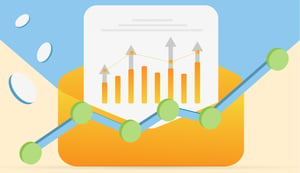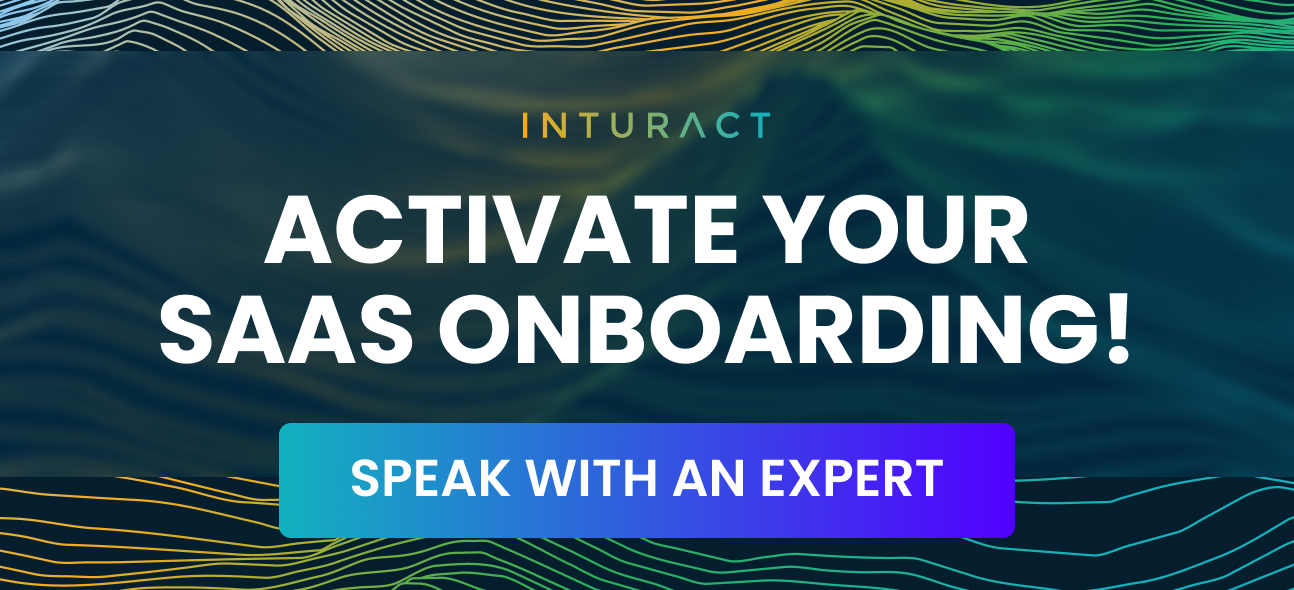Ask any entrepreneur and odds are they will agree that every edge we can get in business, we’ll take. One area where many businesses fall short however, is in their user onboarding emails.
Here’s the harsh truth - getting your user onboarding emails wrong can cost you customers. Full stop.
That’s why in this post, we’re exploring the seven types of user onboarding emails you need to get really good at writing. We’ll discuss what they are, and we’ll discuss the companies we’re watching that are getting their onboarding emails.
Brief Explanation of What User Onboarding Emails Are
User onboarding emails are a series of automated emails sent to new users after they sign up for a product or service.
The primary purpose? To help users get started with whatever they bought or signed up for. It’s the kickoff to guiding them through the user onboarding process.
Importance of user onboarding emails
User onboarding emails are important because they:
- Improve user engagement with your product
- Reduce churn
- Increase the chances of product adoption
- Build brand loyalty
- Save money on support - user onboarding emails typically result in less support requests which can save a lot of time and resources.
7 Types of User Onboarding Emails
The seven types of user onboarding emails we’ll be covering in this post include:
- Welcome Emails: The first email in the onboarding sequence. It introduces new users to the product or service.
- Educational Emails: These emails typically explain how to use the product or service.
- Activation Emails: You’ll send this when you want your users to complete a specific action or take the next step in the onboarding process.
- Engagement Emails: From updates related to new features and invitations to community events, these are the emails you send when you want to keep your users engaged with your product or service.
- Feedback Emails: Just like it sounds, these are the emails you send out when you want feedback on what you’re selling/giving away.
- Upsell/Cross-sell Emails: The goal of these emails is to sell something else to users that have already purchased or signed up for an initial offer.
- Abandoned Cart/Incomplete Profile Emails: These emails are the gentle nudge to complete an action that was started and not finished.
Pro Tip: Start signing up for software in your niche and see what their onboarding emails look like!
Watching what others are doing in your space can give you ideas for what to include in your own onboarding process.
Now let’s look at the seven types of user onboarding emails more in depth to inspire your own email sequences.

Welcome Emails
Welcome emails are what you use to introduce new users to your product or service. It’s critical that your welcome email makes a positive first impression. You want to do three things with your welcome email:
- Establish a relationship with the user
- Provide a VERY brief overview of the product or service - think one or two sentences that tells the reader what they will get out of what they have signed up for/purchased
- Encourage the reader to take the next step.
Tips for crafting effective welcome emails
- Personalize it - use the user’s name (and if they submitted a survey, include a relevant point from it when possible)
- Keep it very brief - you don’t want to be too wordy. In fact, your email should be under 250 words
- The subject line should be compelling
- Remind your reader of the value proposition
- Include a call to action - i.e. best next step
- Make it friendly and conversational so it feels like it came from a human
- Use A/B testing to see what works and what doesn’t.
Companies that are nailing their welcome emails
- Dropbox: Dropbox's welcome email has a clean, simple design and a clear call-to-action. The email explains the benefits of using Dropbox and encourages users to install the desktop app to get started.
- Canva: Canva's welcome email uses a playful, colorful design and includes a brief tutorial video that explains how to use the platform. The email also includes a clear call-to-action that encourages users to start designing.
- Slack: Slack's welcome email includes a friendly, conversational tone and explains how to get started with the platform. The email also includes links to resources and support options for new users.
These successful welcome emails all share common elements, including clear and compelling calls-to-action, personalized content, and a friendly and welcoming tone.

Educational Emails
Just like it sounds, the goal of educational emails is to educate your user. In this case, you’re educating them on the product or service they have just purchased or signed up for.
Types of educational emails to send
You can create a number of different educational user onboarding emails including:
- Tutorials
- Repurposed knowledge base articles
- Tips and tricks for getting the most out of your offering
- Course or lesson emails
- Newsletters with the latest information about your product.
Companies that are nailing their educational emails
- Skillshare: Skillshare, an online learning platform, sends a welcome email to new subscribers that provides them with tips on how to get the most out of their experience. The email includes information on how to find courses, interact with the community, and explore different topics.
- Udacity's course email: Udacity, an online learning platform, sends course emails to students that include video lectures, quizzes, and assignments. The emails are personalized and include feedback from instructors, helping students stay engaged and motivated.
- Charity Water's impact email: Charity Water, a nonprofit organization, sends impact emails to donors that highlight the impact of their contributions. The emails include photos and stories of people who have benefited from the organization's work, helping donors feel connected to the cause and motivated to continue supporting it.
These are just a few examples of successful educational emails. The key to success is to provide value to the reader by sharing information that is relevant and useful to them. By doing so, businesses, organizations, and educators can build stronger relationships with their audiences and support learning and growth.

Activation Emails
Activation emails are intended to “activate” an account. It unlocks features and functionalities by verifying a real person (read: not a bot!) signed up for the account and intends to use it.
Tips for crafting effective activation emails
Just like with your welcome emails you should:
- Keep it brief
- Be friendly
- Use a compelling subject line
- Include a very clear call to action (i.e. “Verify your email address using email verification tools,” or “Set up your profile.”)
- Provide a link to instructions and/or support options.
Companies that are sending awesome activation emails
- Pinterest: Pinterest's activation email includes a clear and compelling subject line ("Welcome to Pinterest! Let's get your account set up.") and a friendly, encouraging tone. The email includes a clear call-to-action that encourages users to create their first board, and provides links to tutorials and support resources if needed.
- Trello: Trello's activation email includes a personalized greeting and a clear call-to-action that encourages users to activate their account. The email also includes a brief overview of the product and its benefits, and provides links to support resources and tutorials.
- LinkedIn: LinkedIn's activation email includes a personalized greeting and a clear call-to-action that encourages users to complete their profile. The email also provides tips and suggestions for improving the profile, and includes links to support resources and tutorials.
These successful activation emails all share common elements, including clear and compelling calls-to-action, personalized content, and a friendly and welcoming tone.

Engagement Emails
The intent behind an engagement email is to build brand awareness, drive conversions, nurture leads, gather feedback, and encourage people to share your offerings.
There are several different types of engagement emails you can send in your user onboarding. These include:
- Welcome emails
- Promotions
- Feedback requests
- Educational emails
- Requests for referrals
- Thank you messages
- Birthday or anniversary messages
- Milestone messages - Canva really shines with this one because they send out a congratulatory message when you have created a certain number of designs.
Other companies sending successful engagement emails
- Airbnb's re-engagement email: Airbnb, a global hospitality company, sends re-engagement emails to users who haven't used the platform in a while. The email includes personalized recommendations and incentives to encourage the user to book a trip, such as "get $50 off your next trip."
- Spotify's personalized playlist email: Spotify, a music streaming service, sends personalized playlists to users based on their listening habits. The email includes a custom message and a CTA that encourages the user to listen to the playlist.
- Sephora's birthday email: Sephora, a beauty retailer, sends personalized birthday emails to customers that include a free birthday gift and a CTA that encourages the customer to redeem the offer.
These are just a few examples of successful engagement emails. The key to success is to provide value to the recipient by sharing information that is relevant and useful to them, and to encourage them to take action that supports the goals of the business or organization.

Feedback Emails
You guessed it, a feedback email’s intent is to gather feedback on your offerings. The goals of feedback emails include, but aren’t limited to:
- Gathering insights about how the user is engaging with your product
- Identifying areas to improve
- Showing users feedback is valued (i.e. making changes where necessary based on feedback received)
- Encouraging engagement and/or retention.
Some tips for sending feedback emails are to be brief and to the point, use a personalized tone, and ask specific questions. You also want to provide incentives when you can so the user actually responds. For example, every survey responder is entered to win a gift card, or everyone that responds gets a percentage off their next bill. Additionally, consider offering a unique photo calendar maker as a creative incentive for participation.
Most importantly, make it easy to provide the feedback, and follow up on any feedback you receive.
Companies that are nailing feedback emails
- Amazon: Amazon sends feedback emails after a purchase, asking customers to rate the product and leave a review. The email includes a personalized greeting and details about the purchase, and provides clear instructions on how to leave feedback. Amazon also offers incentives such as discounts or gift cards for leaving a review, helping to encourage participation.
- HubSpot: HubSpot sends feedback emails after a webinar or event, asking attendees to rate their experience and provide feedback on the content and format. The email includes a personalized greeting and clear instructions on how to leave feedback, as well as links to additional resources and upcoming events.
- Spotify: Spotify sends feedback emails to users after they have listened to a new album, asking for feedback on the music and the user experience. The email includes personalized details about the album and provides clear instructions on how to leave feedback. Spotify also offers a curated playlist based on the user's listening history, helping to drive engagement and retention.
These successful feedback emails all share common elements, including personalized content, clear calls-to-action, and incentives or rewards for providing feedback.
Upsell/Cross-sell Emails
These user onboarding emails can help improve your company’s bottom line. Their intent is to increase your company’s revenue and profitability by making offers to users who have already signed up or made a purchase.
As with every type of email we’ve mentioned so far, it’s best for these to be personalized and brief. You also want to highlight the benefits of the additional offer you’re making. Keep it simple, and focused too. Too many offers and upsells will likely yield no additional revenue!
Companies that are winning the upsell/cross-sell game
- Amazon's "Frequently Bought Together" email: Amazon uses upsell/cross-sell emails to promote additional products that are frequently bought together with the customer's original purchase. The email includes personalized recommendations and a clear call-to-action (CTA) that encourages the customer to add the additional products to their cart.
- Starbucks' "Add a Treat" email: Starbucks uses cross-sell emails to promote additional items that complement the customer's original purchase. The email includes personalized recommendations and a clear CTA that encourages the customer to add a treat to their order.
- Dropbox's "Upgrade Your Account" email: Dropbox uses upsell emails to encourage customers to upgrade to a premium account. The email includes personalized recommendations and a clear CTA that encourages the customer to upgrade their account to access additional features and storage space.
These examples demonstrate how upsell/cross-sell emails can be used to promote additional products or services to customers, and how personalization, clear CTAs, and relevant recommendations can increase the effectiveness of these emails.
Abandoned Cart/Incomplete Profile Emails
Finally, we have the abandoned cart/incomplete profile emails. The goal of sending these types of emails is to re-engage users in hopes that they will become paid users, or at least complete their sign up process to try your product.
The most important tip for these emails is to be timely. As soon as the person abandons their cart or profile, send an email with a clear subject such as:
- Your cart is waiting" or
- "Complete your profile now"
You can use a subject line maker to write several catchy lines and test them to see which one works best for you. Use a very clear call to action as well. And, if you can provide an incentive that encourages them to take action.
Examples of successful abandoned cart/incomplete profile emails
- Best Buy: Best Buy sends abandoned cart emails that feature images of the products left in the cart, along with a clear call-to-action to complete the purchase. The email also includes personalized recommendations based on the user's browsing history, helping to drive additional sales.
- LinkedIn: LinkedIn sends incomplete profile emails that remind users to complete their profiles and offer suggestions on how to improve their profiles. The email includes a clear call-to-action to return to the site and complete the profile, as well as links to helpful resources.
- Zappos: Zappos sends abandoned cart emails that feature images of the products left in the cart, along with a clear call-to-action to complete the purchase. The email also includes personalized product recommendations and customer reviews to help drive additional sales.
- Uber: Uber sends incomplete profile emails that remind users to complete their profiles and offer suggestions on how to improve their profiles. The email includes a clear call-to-action to return to the app and complete the profile, as well as a personalized incentive in the form of a free ride credit.
These successful abandoned cart/incomplete profile emails all share common elements, including personalized content, clear calls-to-action, and incentives or rewards for completing the purchase or profile.
Ready to up your user onboarding emails game, but don’t know where to start? The experts at Inturact can help! Click here to speak with one of our experts.



